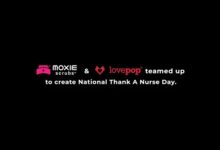Healthcare Facilities Take Action as Nurses Leave the Industry

Nurses are leaving the industry in droves. Consequently, the healthcare industry is currently undergoing a massive transformation.
As this trend continues, it now presents a significant concern for decision-makers in healthcare facilities as the situation forces them to consider its impact on the broader patient experience.
Nurses leaving the profession cite burnout, long hours, and high-pressure environments as critical factors, all exacerbated by the COVID-19 pandemic and its aftermath. While all of these factors have been a part of the nursing industry for decades, they are now reaching critical levels for many nurses.
The immediate aftermath of these staffing shortages places further pressure on existing healthcare staff, which affects the quality of patient care. At the same time, the long-term ramifications of seasoned registered nurses quitting their jobs can result in the loss of valuable skills and knowledge, which can influence a facility’s reputation for many years.
Healthcare facilities increasingly embrace PRN (or per diem) nursing to address staffing gaps. These professionals offer flexible solutions for facilities, providing a buffer during patient volume surges or critical periods.
In this article, we’ll discuss the current state of the nursing exodus and how healthcare leadership can mitigate its impact on their facilities.
Understanding the Exodus: Why Are Nurses Leaving?
Nurse attrition is a critical issue affecting the healthcare industry. Burnout, long working hours, and taxing work environments are central reasons for nurses to depart from their profession. The demanding nature of nursing often leads to physical and emotional exhaustion, making it challenging to maintain a healthy work-life balance.
As dissatisfaction accrues, nurses seek out alternative career paths. The toll on mental and physical health drives them to explore less stressful options.
Understanding the motives behind this exodus is crucial to finding sustainable solutions within your facility. At the same time, grasping the full extent of what this exodus may mean—both in the immediate future and in the following years—can help facility stakeholders and administrators take proactive action to mitigate the inevitable loss of experienced nurses.
Short-Term Ramifications
As nurses leave the industry, the immediate aftermath is a strained healthcare system.
Staffing shortages become pronounced, causing increased workloads for remaining healthcare professionals. This surge in workload can overwhelm the existing staff, leading to fatigue and potential errors in patient care—not to mention the increased chance that more nurses will quit under these trying conditions.
Inadequate staffing levels strain the efficiency of healthcare facilities, affecting their ability to provide timely and optimal care. Short-term solutions, like overtime for existing staff, are only temporary, posing a risk to the well-being of long-term staff and patient safety.
Long-Term Ramifications
In the long run, the departure of experienced registered nurses from the healthcare industry carries profound implications for individual facilities.
The loss of their expertise and institutional knowledge is a severe blow. Over time, this attrition can lead to a decline in the overall quality of patient care, negatively impacting patient outcomes and satisfaction levels.
See Also: A Global Nursing Shortage Spikes an International Battle for Nurses
Moreover, a high turnover of nursing staff can tarnish the reputation of healthcare facilities. The perception of instability may deter potential recruits, making attracting and retaining top talent challenging.
A facility with a reputation for overworking and understaffing will need help finding nurses for both short-term coverage and long-term positions. Consequently, this hinders the facility’s growth and advancement in the long run. Luckily, there are immediate steps that these facilities can take to get experienced nurses to their patients’ bedsides.
PRN Nursing: How Does It Work?
PRN nursing, or “pro re nata” nursing, is a flexible staffing solution increasingly adopted by healthcare facilities to address staffing challenges. In essence, PRN nurses integrate into the existing facility infrastructure as needed.
Healthcare facilities can tap into a network of PRN nurses when there’s a surge in patient volume—or a series of sudden departures from the full-time nursing staff.
Having a roster of PRN nurses enables facilities to meet this demand while maintaining their regular staff. With PRN nursing, facilities can maintain an adequate nurse-to-patient ratio during these periods, ensuring optimal patient care throughout the year.
At the same time, many available PRN nurses have spent years in different facilities, giving them an excellent handle on a wide range of situations and management structures to equip them for various nursing jobs.
How Facilities Can Harness PRN Nursing to Supplement Their Staff
Healthcare facilities increasingly embrace PRN nursing to effectively manage staffing challenges and ensure optimal patient care. Leveraging PRN nursing can significantly supplement their existing staff and enhance operational efficiency.
Firstly, facilities can strategically schedule PRN nurses during high-demand periods, such as busy shifts, seasonal patient surges, or special events when additional clinicians are required. By doing so, the facility can maintain an adequate nurse-to-patient ratio, preventing burnout among the full-time staff and upholding a high standard of care.
Secondly, utilizing PRN nurses allows facilities to fill unexpected schedule gaps. Illness, emergencies, or unforeseen leaves can disrupt staffing levels. PRN nurses provide a flexible and reliable solution to cover these unplanned absences promptly.
Additionally—and most relevant to the situation—leaning on PRN nurses is an excellent option when facilities attempt to fill the void left by an experienced nurse. With more and more nurses leaving their jobs and the industry overall, a reliable network of PRN nurses can supplement staffing levels in the short term while preventing the long-term issues that arise from chronic overwork.
Overall, embracing the healthcare marketplace represents a step towards a more sustainable and adaptable system. By effectively integrating PRN nursing, facilities can navigate healthcare staffing challenges and enhance the overall quality of patient care. Curtis Anderson, CEO and founder of Nursa, called out the disturbing truth in a recent Becker’s Healthcare article:
“Nursing shortages are a complex phenomenon that began to take shape even before WWII and have continued to challenge hospitals and healthcare facilities for 90+ years. And unless leaders expand their perspective and go beyond solutions suggested in the 1930s—like incentivizing students to attend nursing school rather than incentivizing nurses to remain in the workforce—healthcare organizations will be hard-pressed to make a sustainable difference.”
Better for Facilities, Better for Patients
As the nursing exodus continues, the PRN nursing model is poised to play a vital role in the future of nursing and healthcare staffing. Its flexibility and efficiency in addressing staffing needs make it a valuable asset for healthcare facilities of all sizes.
In a broader sense, the rise of PRN nursing reflects a shift towards a more adaptable workforce that aligns with the dynamic nature of the healthcare industry.
See Also: What Influences RN Jobs Outlook in Each State?
Nursa is an excellent resource for facilities hoping to tap into the existing network of PRN nurses in their areas. Sign up today and build a better facility for your patients and nurses.







